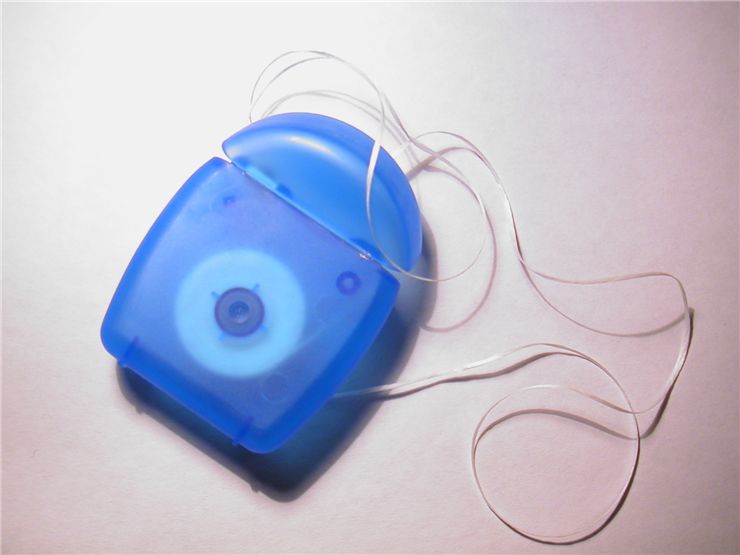Dental Floss - History and Invention of Dental Floss
Dental floss is a thread used to remove food and dental plaque from teeth. It is inserted between the teeth and scraped along the teeth sides, close to the gums and sometimes between teeth and gum. It is used in combination with tooth brushing and can reduce gingivitis and halitosis.
It is not know for sure when people started to floss. There is archeological evidence, in the form of markings on the teeth of found sculls that people used to floss in prehistoric times. But reinvention of a dental floss in the more modern times must be attributed to Levi Spear Parmly, a dentist from New Orleans. He invented the first form of dental floss in 1815 and recommended that people should clean their teeth with it daily. The first human-usable, not waxed silk floss was produced by the Codman and Shurtleft Company in 1882 and that is when the dental floss became available to the common consumer. Johnson & Johnson Corporation managed to patent dental floss in 1898. Red Cross, Salter Sill Co. and Brunswick made their own brands of dental floss at the same time. One of curiosities of an early use of dental floss is that it was depicted in the James Joyce's novel Ulysses which was published in a series between 1918 and 1920. But that didn’t help its wider use until 1940s and the invention of the nylon floss. Dr. Charles C. Bass invented it and found that it has greater abrasion resistance and elasticity than silk. Nylon also allowed for the invention of waxed floss in the later 1940s and, from that, the development of dental tape in the 1950s. Since then, many types of dental floss were invented. For some types, nylon is replaced with Gore-Tex, flavors are added and textures are changed to make spongy floss and soft floss. Today, dental floss is a major part of daily care for teeth, in combination with tooth brushing and use of a mouthwash.
Dental floss generally comes in plastic dispensers. They contain 10 to 100 meters of floss and have a small protected blade which is used to sever the desired amount of floss. Thread of dental floss is then held between the fingers or strung on a fork-like instrument. Particles of food stuck between teeth are then removed by guiding of the thread between each tooth and under the gumline. Most important characteristic of dental floss to look after when buying is its thickness. If the floss is too thick it can be too wide for the space between a pair of teeth and it could not be used. If the floss is too thin, it may be too weak and could break when tighten.
There are also specialized plastic wands, or so-called floss picks, that are produced to hold the floss. They can also have dispensers for floss built into them. They can have good reach which makes flossing the back teeth easier but they also can be awkward to use and can also make difficult to floss at all angles.

